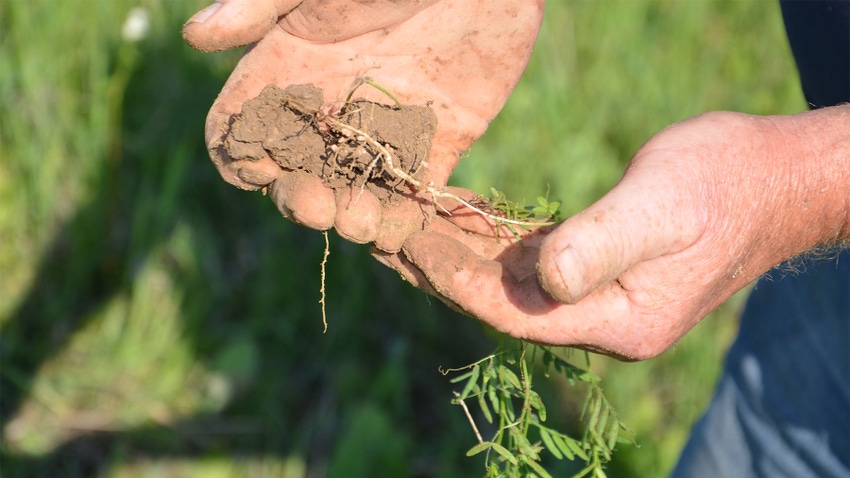September 22, 2023

by Amanda Kautz
Four studies released from 2019 to 2023 by the University of Illinois show that on average, 67% of nitrogen found in corn comes from sources occurring in the soil. Researchers labeled nitrogen fertilizers applied with N15 to identify naturally occurring nitrogen vs. synthetic nitrogen. In all cases, no matter the application method or timing, most nitrogen was unlabeled. So, it came from the soil, not synthetic fertilizer.
Plus, biological processes are required to make synthetic fertilizers available to corn. If these processes are biologically broken, more nitrogen must be added.
These results stimulate questions. How can you get more nitrogen in the soil without using synthetic fertilizers? Building soil health through cover crops could be the solution.
Charging the nutrient cycle
The key to nutrient cycling through soil is a functioning soil food web. This food web is responsible for the decomposition of crop residue, cover crop residue and dead microbes that can provide plant-available nutrients. To build habitat for your biology, you need to minimize disturbance and maximize cover, diversity and continuous living roots. These principles ensure the soil structure has pore space for biology and guarantee a food source over the winter.
Remember, it takes time to build sufficient habitat and for biology to become fully functional. A 1-year-old soil health system will act much differently than a 10-year-old system. Functionality improves over time.
Cover crop connection
Cover crops help build these systems and provide natural sources of nutrients. Legumes, such as clovers and peas, fix nitrogen. Excess not needed by the plant is sequestered. Grass cover crops, such as cereal rye or annual ryegrass, capture excess nitrogen that was applied to the last crop. It’s incorporated into the cover crop instead of moving off-site.
There is a catch. For N to be released, the cover crop must decompose. This depends heavily on both functionality of soil biology and the carbon-to-nitrogen ratio of the material. A high carbon-to-nitrogen ratio means it takes longer to break down and release nutrients. This breakdown process may cause temporary tie-up of nitrogen. A low carbon-to-nitrogen ratio material will decompose faster, releasing available nitrogen. However, this nitrogen could leave the field through leaching or other means if the crop isn’t ready to take it up or too much is released at once.
This delicate balance depends on many factors. You may have to try several cover crop combinations before you find one that works best for your field. Manure could also boost soil nitrogen and provide support for the soil food web. However, get an analysis so you’re not overapplying nutrients and increasing chances of runoff or leaching.
Still need fertilizer
The U of I research results don’t mean you shouldn’t apply synthetic nitrogen fertilizers for corn, but it makes the case for using natural sources to add nitrogen. Take soil nitrogen into account when determining your crop nutrient budget.
Richard Mulvaney, co-author on all four studies, says, “If the soil is the main source of nitrogen for crop uptake, which it almost always will be, we need to take the soil into account. Otherwise, with factors like timing, rate, placement and form, we’re tweaking, but probably won’t find a miraculous increase in efficiency using those approaches.”
Kautz is the Indiana soil health specialist with the Natural Resources Conservation Service. She writes on behalf of the Indiana Conservation Partnership.
Read more about:
NitrogenYou May Also Like




